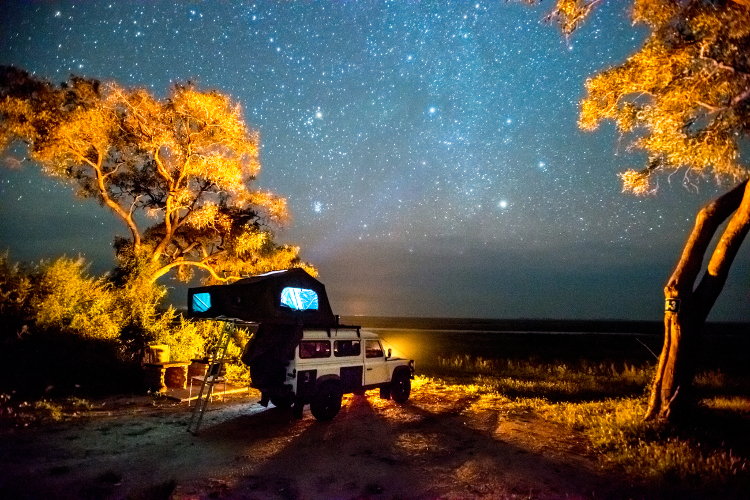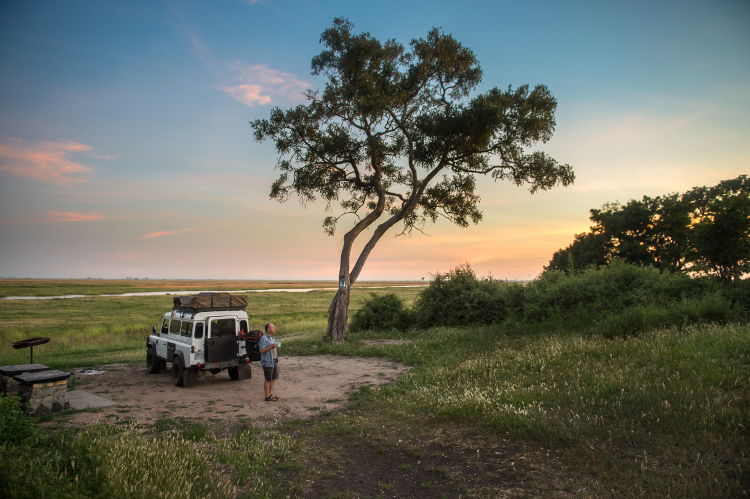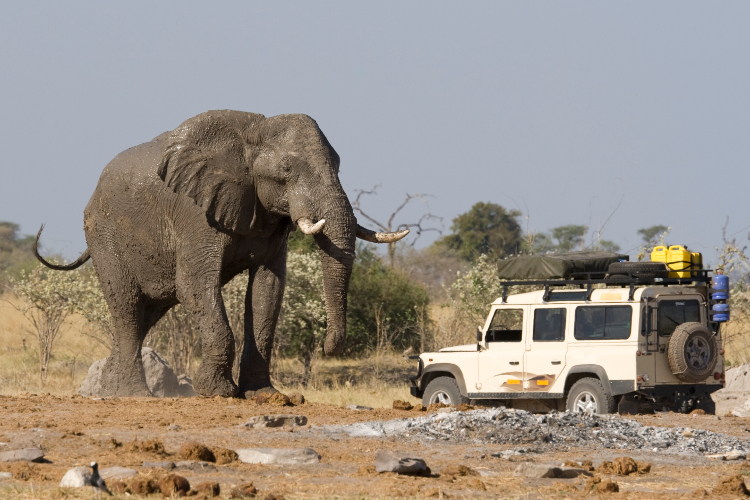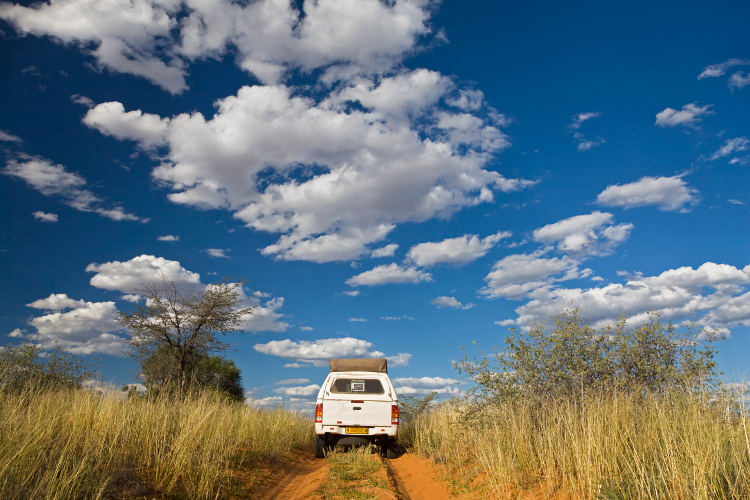
Self-drive safaris in Botswana typically start with a flight into Gaborone, Kasane or Maun, or to Johannesburg in neighbouring South Africa. Upon arrival you'll pick up your 4WD camper and head out into the wilds. The customised vehicles are typically well equipped, with internal beds or folding roof-top tents, cooking equipment and even fridges in some cases. Many operators offer 4WD beginner courses to make sure that you understand the difference between your diff lock and your gear stick. When it comes time to leave the tarmac, the GPS is king – Tracks4Africa (tracks4africa.co.za) is a reliable choice for maps. Booking ahead for campsites, too, is essential, particularly in peak periods: any South African school holiday periods, and July to September when driving conditions are optimal.
The better 4WD rental companies will make the necessary reservations and obtain park permits. And, of course, most will, for a fee, provide you with a satellite phone. Reliable options include Safari Drive (safaridrive.com), Drive Botswana (drivebotswana.com) and Travel Adventures Botswana (traveladventuresbotswana.com).
Once you enter fully into the wild lands covered below, the advantages of your decision to self-drive will immediately become clear: freedom to roam, time to gander at whatever you want and nobody for the animals to look at but you. And come the evening at your remote campsite, after you've enjoyed a hearty meal from your gas stove, sit down with a cold beverage and soak up the silence before evening gathers and the night sounds of Africa fill the darkness all around. This is, after all, a country to be experienced in blissful isolation, with nothing but canvas separating you from the African night. Sleep safe in the knowledge that where you go tomorrow is entirely up to you.

The Okavango Delta, in the country’s north, is an African miracle, an extraordinary spectacle, and a byword for the abundance of wild Africa. Every year, January rains that fall in the highlands of Angola head not for the sea but relentlessly down into the delta, arriving several months later. They water the plains and river channels before eventually soaking into the northern Kalahari. At the waters’ peak, much of the delta is inaccessible to vehicles, but that changes from July through to September or tinder-dry October. It is then that the great drama of the Okavango takes hold, as predator and prey tussle not for supremacy but for survival. It is about big cats (lion, leopard and cheetah) and big creatures (elephant, buffalo, hippo), about local specialties (the splay-hoofed sitatunga and the delta-adapted lechwe) and an astonishing richness of birdlife.
The delta is so large – up to 18,000 square kilometres at its greatest extent – that making the most of your time here requires careful planning.

The Okavango Panhandle, that narrow river valley through which the annual deluge flows, is ideal for birdwatching, for fishing and for getting out onto the water in a mokoro (dugout canoe). It's less ideal for viewing large mammals. Further east, the Moremi Game Reserve is the delta’s heartland, fed by well-worn trails and serviced by iconic campsites such as Third Bridge where lions roam, or Xakanaxa where hippos blart by the lagoon deep into the night.
East again and the outer reaches of the delta spill over into the Savuti Marsh of Chobe National Park, an area famed for lion and elephant clashes. The nearby Linyanti Marsh is known for its roaming packs of African wild dogs, while the Chobe Riverfront area is home to some of Africa’s biggest elephants roaming in their tens of thousands.
Where the delta ends, the Kalahari takes over, and the challenge of driving here is all about sand and salt rather than water, although even such stark realities come with a caveat: the Kalahari may be the largest sand desert on earth, but sand dunes are unusual and deep-sand driving is rarely an issue. Then again, if driving here late in the dry season (late September and October), wind-blown grass seeds can play havoc with your radiator.
From north to south, a string of protected areas guide your path through the Kalahari. In the north, the largest network of salt pans on the planet – Sowa (Sua), Nxai and Ntwetwe Pans together make up the Makgadikgadi Pans – covers an area as large as the delta. The Boteti River in the west draws wildlife in the dry season, with vast numbers of zebra migrating east during the rains (islands of baobabs shelter campsites of rare beauty in this area).

Further south, across the Nata-Maun highway, is the Central Kalahari Game Reserve. One of the largest in Africa, it is a soulful, deep-desert reserve where low sand hills and fossilised river valleys shelter black-maned lions, as well as leopard and cheetah, gemsbok and honey badger. It is a remote and lightly trammelled world where the nearest member of your own species may be tens of kilometres away across arid country that belongs to lions.
In the south, the park segues into the Khutse Game Reserve, another fine park where big cats outnumber humans. Further away still to the south, the Kgalagadi Transfrontier Park, which Botswana shares with South Africa, is classic Kalahari country with red-sand dunes and wildlife in abundance.
East and west of the Kalahari respectively, the Tsodilo Hills and the Tuli Block make terrific, bouldered add-ons to the Kalahari experience. Tsodilo is a haunting landscape of millennia-old rock art, the Tuli Block one of southern Africa’s most underrated wildlife-watching destinations.